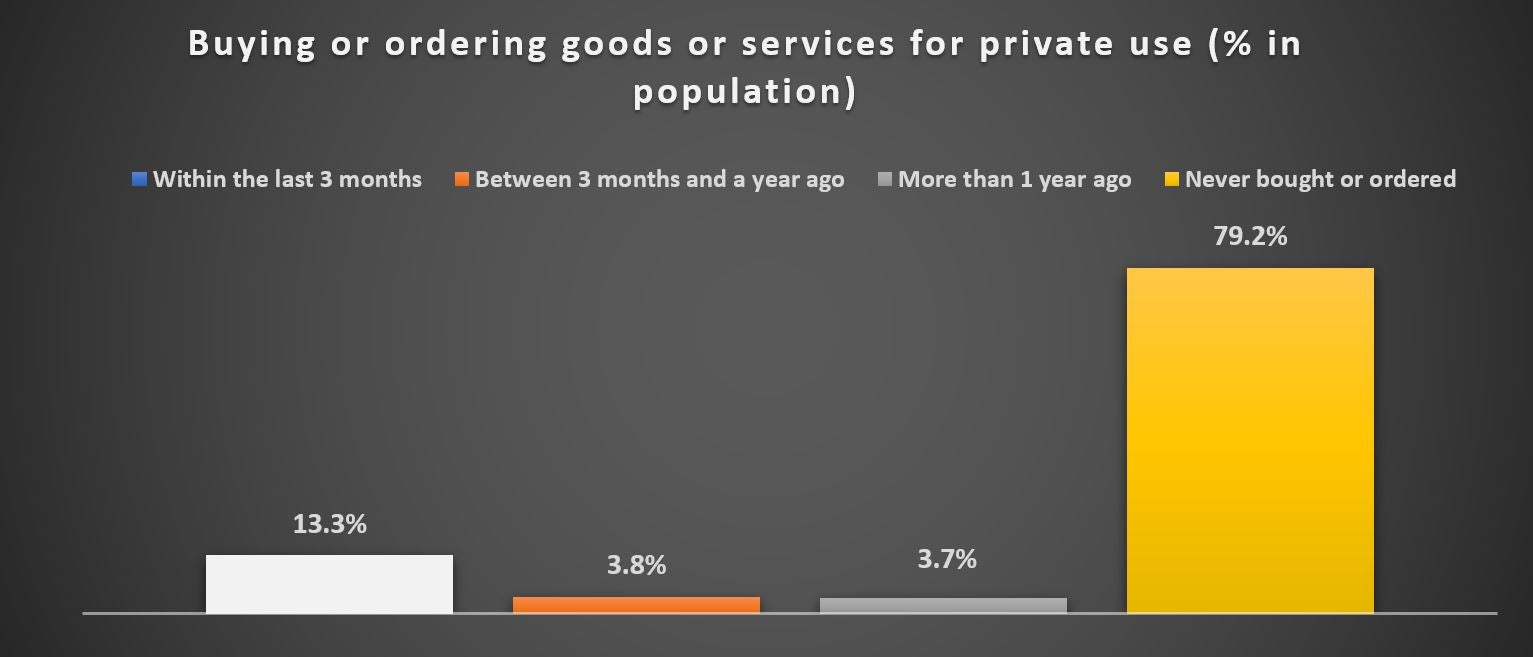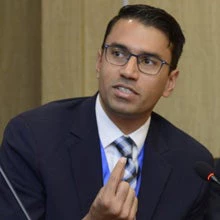 Ինտերնետի օգտագործումը Հայաստանում
Ինտերնետի օգտագործումը Հայաստանում
Given that 96 percent of the Armenian population have access to internet, it has clearly become a widespread service. During this time of unprecedented social distancing and mobility restrictions to combat the COVID-19 pandemic, reliable internet connectivity is as important as electricity, gas, or water because it allows individuals, businesses, and governments at all levels to continue vital operations.
Internet access opens a wide variety of opportunities, even during challenging times. The different benefits depend on how and for what purposes the internet technologies are used.
By analyzing the findings of a recent World Bank survey on internet use in Armenia, we have gained a greater understanding of the purposes of internet use across the country.
Entertainment and basic communication activities dominate Armenians’ internet use
We found that in Armenia, the internet is most often used to access communications and media services, including calls, messaging, social networks, and online news. However, virtual activities that are gaining in importance in the new “quarantined reality” have not actually been as popular thus far. The list of activities more recently considered vital includes: sourcing critical information online (only 37 percent of survey respondents), e.g., related to health, goods and services, or job opportunities; carrying out virtual work-related communications (31 percent), including e-mailing and online conferencing; publishing one’s own content (16 percent), e.g., for education purposes; or engaging in e-commerce activities (8 percent), such as online sales or internet banking.
This may point to the fact that the unforeseen and abrupt transition of daily routines to the virtual environment we have witnessed recently might have been difficult for a significant portion of society. For example, although 83 percent of the overall population use the internet daily, only half of people older than 65 do so. At the same time, about 8 percent of the population report never having used it at all. This number is higher within specific groups, reaching 14 percent in the lowest income group (those with a monthly income of less than AMD 100,000 [roughly US$210]) and 30 percent of those over 65. Thus, elderly or poorer individuals might be at risk of losing access to social or economic networks and opportunities.
Other factors could limit internet use
This gap could be due to a lack of skills or awareness. It could also be a lack of the technological capability needed to engage with these services meaningfully. For example, if a household does not have a broadband internet connection, it is unlikely that its members can use a mix of online learning and work-related communications effectively.
Access to devices might also influence how people use the internet. For example, mobile phones are the most popular means of accessing the internet among individuals (69 percent of the population). Only 17 percent of individuals use laptops for internet activities, however, which might become a challenge for the population when it comes to accessing basic public services online (such as online education, for example).
Firms can also connect better to opportunities
Similar trends are visible among firms. Despite the growing use of e-commerce, only a small share of the population—13 percent—buy goods and services online. Moreover, online purchasing practices are significantly different in urban and rural areas. Twenty-one percent of residents in Yerevan have done online purchases within the past three months, while in other urban areas and in rural communities generally, the figures are 14 and 9 percent of the population, respectively.
Thus, although many businesses use information technology, that use is not yet transformational. Small and medium enterprises (SMEs), for example, report that they frequently use IT to optimize business procedures in sales, customer relations, and accounting, but in most cases, that share does not exceed 50 percent. The use of technologies in other operations is even lower.
When interacting with the government, SMEs use digital platforms mainly to pay taxes. In the business-to-business domain, only 20 percent of SMEs do online contracting and use digital payments for transactions. Moreover, a significant number of companies never use IT for any transactions with other businesses (63 percent) or public authorities (55 percent).
Don’t have, so don’t need…?
Armenians’ limited use of the internet for economic activities also influences how SMEs use these technologies. Our survey found that most SMEs started to use IT because of consumer demand, while companies that do not yet use online services find that the technologies are not relevant to their business activities. On the other hand, about half of the people who do not use the internet say they are offline because they do not see a need for access. This suggests that a vicious circle might be at play: the limited use of the internet by individuals and businesses might be due to the limited awareness of the opportunities involved in engaging in economic activities online.
Our last blog in this series will probe deeper into this question and consider how the vicious circle might be converted into a virtuous one, triggering a positive shift where more individuals and businesses are online and benefit from connectivity to markets, information, and services.
The authors acknowledge the support of the EU4Digital initiative, supported by the European Commission and implemented by the World Bank, and of the Digital Development Partnership that made this research and analysis possible.







Join the Conversation